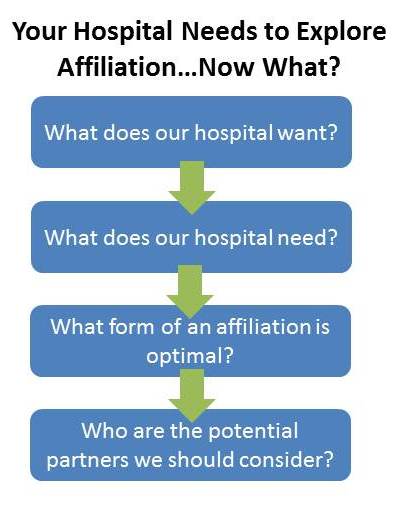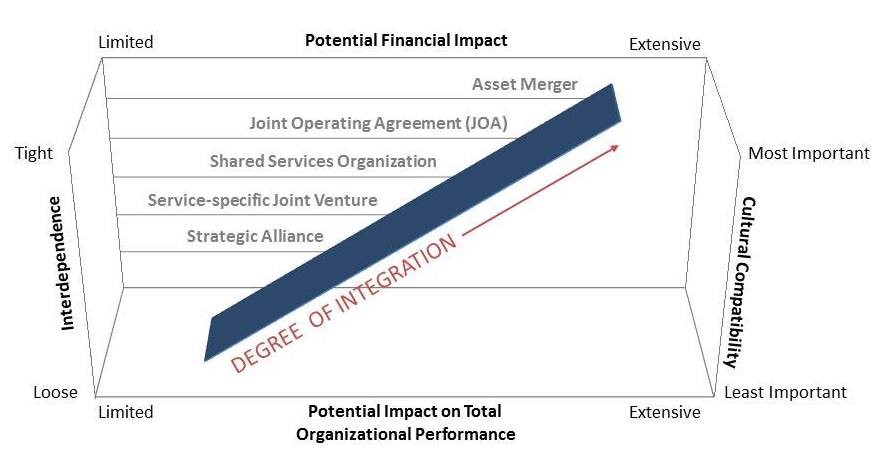Affiliations for Independent Hospitals: How to Start the Process
Many independent hospitals around the country are evaluating their current competitive and financial position and coming to a similar conclusion: we need to explore an affiliation to remain a valuable and sustainable health care provider for our community. While reaching consensus that affiliation should be considered can be a difficult and emotional process, the next steps require even deeper reflection and candor about the future of your health care organization.
There are several key questions to consider once the decision to seek an affiliation is reached:
1. What does our hospital want?
There are a wide range of benefits that may be realized from affiliation. Some of the common benefits hospitals hope to achieve include:
- Clinical program development
- Physician recruitment
- Access to capital
- Quality improvement
- Financial performance improvement (revenue enhancement and/or cost reduction)
- Access to a broader care continuum
Organizations must prioritize the benefits that are most important to them and ensure that affiliation discussions focus on maximizing potential benefits in those areas.
2. What does our hospital need?
There will be some aspects of an affiliation your organization views as must-haves. Depending on your situation, these must-haves could be a subset of the benefits expected from an affiliation. For example, if an organization is highly leveraged, access to capital may be a requirement for any partnership. Must-haves do not need to be limited to benefits; they may also include cultural compatibility, assurances that current clinical services are maintained for the local community, or a guaranteed level of autonomy.
3. What form of affiliation is optimal?
Affiliations come in various forms, each with distinct advantages, disadvantages, and considerations (see graphic below). Generally, tighter affiliations yield greater impact on organizational performance; however, the trade-off is that they usually require relinquishing some control to the larger affiliate. It is also important to consider the implications of each affiliation model to identify which forms may be optimal and rule out any model that a health care organization is not willing to consider.
4. Who are the potential partners we should consider?
Being proactive in the affiliation process is essential. Organizations should not sit back and hope the optimal partner will seek them out to explore an affiliation. Leadership teams need to develop a list of potential partners from which they can initiate preliminary affiliation discussions. There are many considerations that can help refine this list:
- Are there organizations with which you have had beneficial partnerships in the past?
- Are there organizations that have been successful consolidators in your local or regional market?
- Are you willing to consider a for-profit partner?
- Are there organizations with which you believe you share a common vision or compatible culture?
The first steps of an affiliation process should include input from both the board and management team to reach consensus on as many of these considerations as possible. The answers to the questions noted above will ultimately drive development of the request for proposal (RFP) that will be sent to prospective partners. If and when this point is reached, the thoughtful and proactive consideration, analysis, and discussions about your organization’s wants and needs that led up to the RFP stage will serve your organization well when the time comes to evaluate the proposals received and select the best course of action.

